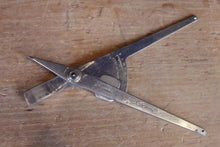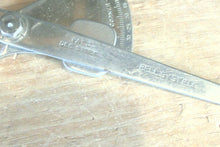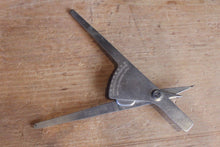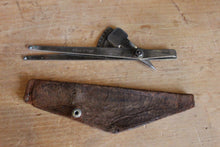Bell System
Howe’s Patent Corner Gauge for Phone Lines
With Original Leather pouch
Copy of Patent included
Filed Dec. 4, 1922
The Howe's Patent Corner Gauge is a specialized tool designed to assist in the installation and maintenance of telephone lines, particularly at corner or angle points. Patented by Paul J. Howe on December 9, 1924, under U.S. Patent No. 1,519,082, this device was developed to ensure precise alignment and tensioning of wires when navigating corners, thereby maintaining the integrity and efficiency of telephone line installations.
Design and Functionality:
- Structure: The gauge typically features a robust frame equipped with measurement indicators and adjustable components to accommodate various wire gauges and angles.
- Purpose: It facilitates accurate measurement and alignment of wires at corner junctures, ensuring consistent tension and proper orientation, which are crucial for optimal signal transmission and structural stability.
Historical Context:
During the early 20th century, as telephone networks expanded, the need for precise tools to manage complex wiring systems became increasingly important. Howe's invention addressed challenges associated with maintaining wire tension and alignment at corners, contributing to the reliability of telephone services.
Collectability and Availability:
Today, Howe's Patent Corner Gauges are considered collectible items, reflecting the technological advancements of their era. They occasionally appear in antique tool auctions and specialized collections.
Howe's Patent Corner Gauge represents a significant development in the history of telecommunications, exemplifying the ingenuity applied to overcome technical challenges in the early days of telephone line installation and maintenance.
CONDITION
Very Good
No issues noted
See all pictures
Please contact us with any questions!








